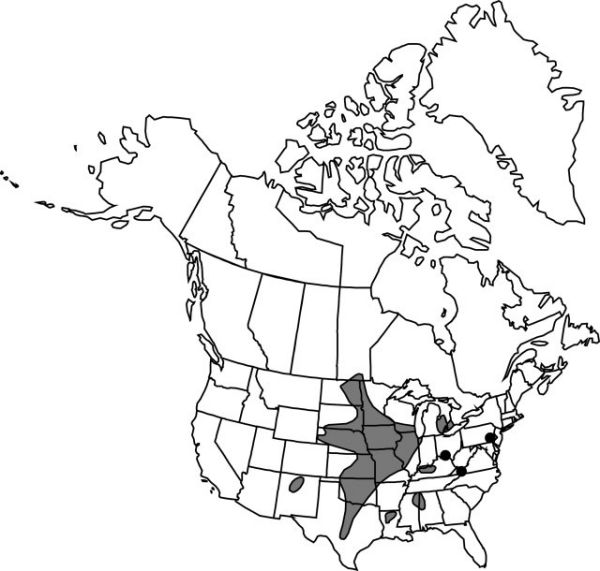Difference between revisions of "Spiranthes magnicamporum"
Bot. Mus. Leafl. 23: 287, plate 22. 1973.
FNA>Volume Importer |
FNA>Volume Importer |
||
| Line 32: | Line 32: | ||
-->{{#Taxon: | -->{{#Taxon: | ||
name=Spiranthes magnicamporum | name=Spiranthes magnicamporum | ||
| − | |||
|authority=Sheviak | |authority=Sheviak | ||
|rank=species | |rank=species | ||
| Line 47: | Line 46: | ||
|publication year=1973 | |publication year=1973 | ||
|special status= | |special status= | ||
| − | |source xml=https://jpend@bitbucket.org/aafc-mbb/fna-data-curation.git/src/ | + | |source xml=https://jpend@bitbucket.org/aafc-mbb/fna-data-curation.git/src/f50eec43f223ca0e34566be0b046453a0960e173/coarse_grained_fna_xml/V26/V26_1097.xml |
|subfamily=Orchidaceae subfam. Orchidoideae | |subfamily=Orchidaceae subfam. Orchidoideae | ||
|tribe=Orchidaceae tribe Cranichideae | |tribe=Orchidaceae tribe Cranichideae | ||
Revision as of 20:44, 16 December 2019
Plants 7–60 cm. Roots few, descending, tuberous, mostly to 0.8 cm diam. Leaves fugaceous or rarely persisting to anthesis, basal, ascending, linear-lanceolate to oblanceolate, to 16 × 1.5 cm. Spikes usually very tightly spiraled, 3–4 flowers per cycle of spiral; rachis moderately pubescent, some trichomes capitate, glands obviously stalked (longest trichomes 0.2–0.52 mm). Flowers abruptly nodding from base, white to ivory, gaping, lip not strongly curving from claw, not urceolate; sepals distinct to base, 5–14 mm; lateral sepals wide-spreading, commonly ascending above flower; petals linear to lance-oblong, 4.9–13 mm, apex acute to obtuse; lip commonly yellow centrally, ovate to oblong, 4.9–12 × 3.3–7 mm, margins crenulate, glabrous; veins several, branches parallel; basal calli short-conic, mostly to 1 mm; viscidia linear-lanceolate; ovary 4–10 mm. Seeds monoembryonic. 2n = 30.
Phenology: Flowering Aug–Nov.
Habitat: Dry to wet prairies and fens
Elevation: 0–1900 m
Distribution

Man., Ont., Ala., Ark., Ill., Ind., Iowa, Kans., Ky., La., Mich., Minn., Miss., Mo., Nebr., N.Mex., N.Dak., Ohio, Okla., Pa., S.Dak., Tex., Va., Wis.
Discussion
Leaves typically senesce some weeks before anthesis, usually before the inflorescence appears. Occasionally at the northern and western range limits of the species, however, especially in wetter habitats, they may persist into anthesis. See notes on gene flow and apomixis under 14. Spiranthes cernua.
Selected References
None.